How to Grow String of Hearts: A Sweet Succulent-Like Trailing Houseplant
Oh sweet little String Of Hearts, many people think you’re a succulent but you aren’t. This trailing houseplant is durable, easy as can be and the care is similar to a fleshy succulent but it shares the same family with another plant I love, the Hoya. They are both considered to be a succulent vine.
The botanic moniker is Ceropegia woodii but it also goes by Rosary Vine or Chain Of Hearts.
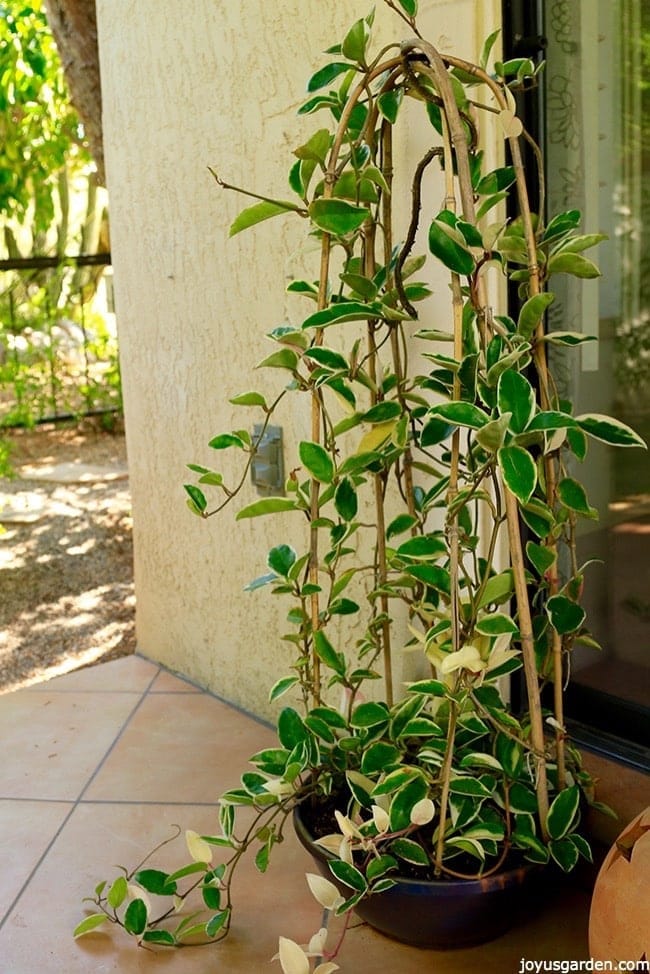
My Hoya, a cousin to the String Of Hearts, has grown like crazy so it’s time to repot that soon.
This unusual beauty with heart-shaped foliage, hence the name, came with me when I moved from Santa Barbara to Tucson. In the 4 months that I’ve lived here, this plant (which hangs in my pink grapefruit tree) has grown like the dickens. The trails were all about about 12″ long and now the longest are 43″. I’ve fast discovered that Rosary Vine loves the heat!
The Rosary Vine loves the heat but not direct sun.
Although a healthy String Of Hearts has a lot of foliage on many stems, it’s not a full and bushy vine. It stays on the wispy side but this, along with the flowers, are a big part of its appeal. Mine got hopelessly tangled on the 9 hour “car crammed full of plants drive” to my new home and that way it’ll stay. Tangles and all, it’s doing just fine.
Here are some things to know about the Rosary Vine:
Size:
The trails of a Rosary Vine can reach up to 12′ long in its natural habit. Usually when grown as a houseplant it doesn’t get much past 2′ long. Mine grows outdoors & is well on the way to 4′ long.
Exposure:
Indoors you want to give it very bight light with no direct sun. A west window is fine but just make sure it isn’t up against the hot glass. Outdoors I keep mine in bright shade with no direct sunlight – it grows under my pink grapefruit tree.
Water:
When grown as a houseplant, you want your String Of Hearts to dry out in between waterings. As I said, this plant isn’t technically a succulent but you want to treat it like 1. I was watering mine every other day here in the desert in those hot summer months but now it’s October (the highs are right around 90) & I’ve backed off to every 3-5 days. Give it too much water & kiss it goodbye!
Important to know: water even less in the winter because the Rosary Vine goes dormant.
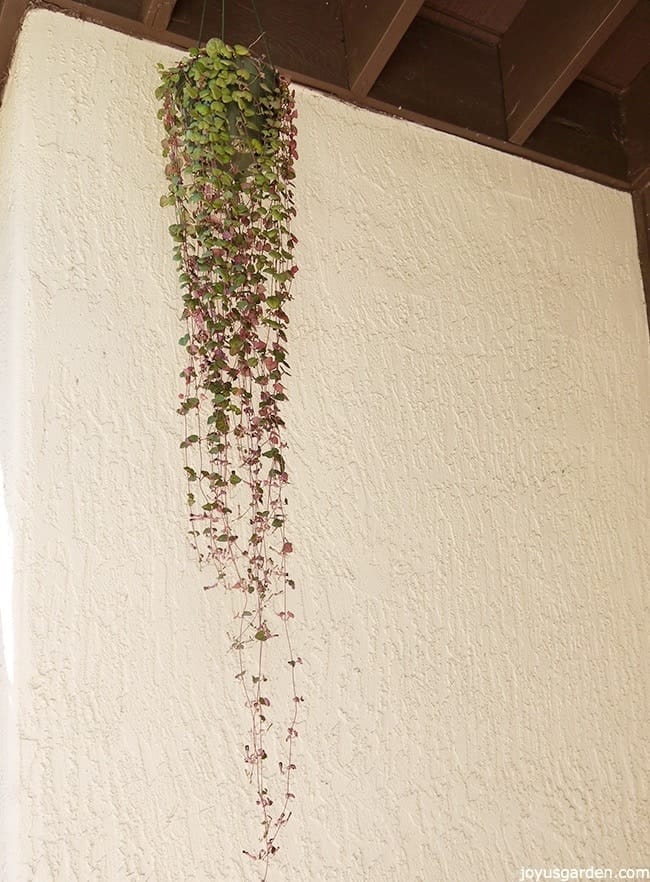
My String Of Hearts is a trailing machine!
Hardiness:
Mine lived outdoors in Santa Barbara where the winter temps could dip into the high 30’s F, low 40’s. I read somewhere that it’s hardy to 25F so I plan on leaving outside here in Tucson & see what happens.
Soil:
A succulent & cactus mix is just fine. If you have some coco coir, your String Of Heats would love it added to the mix. Or, a combo of half cymbidium orchid & half succulent mixes would work fine too. Just make sure the mix drains really well.
Transplanting:
It’s best to transplant your Rosary Vine in spring or summer.
Fertilizer:
Like most of my plants, I top dress with worm castings in the spring. If you feel yours needs some feeding, then an application of balanced liquid houseplant fertilizer in spring would work too.
Flowers:
Yes it does! Mine started flowering at the end of summer & the blooms just keep on coming.
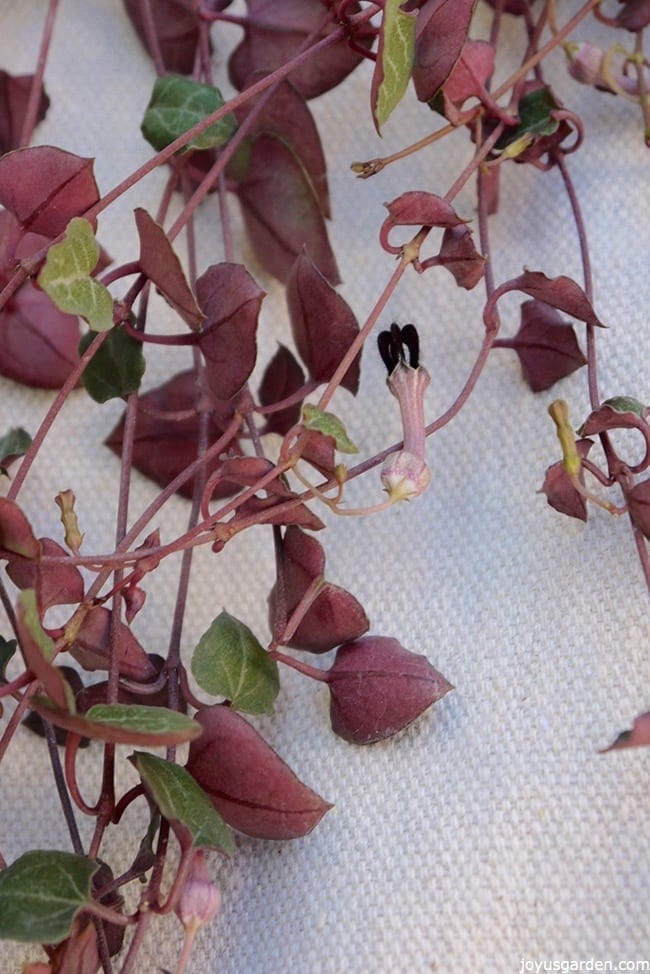
Here are those sweet but funny little flowers.
Pruning:
Not much of any is needed. I’ve only cut a few dead stems out. If yours gets leggy or you want to propagate it by cuttings, then you’ll need to prune.
Propagation:
The easiest ways are by stems cuttings & by laying the tubers right on top of a mix. They root very quickly.
Pests:
Mine has never had any but reportedly mealybugs can appear. Keep your eye out for aphids & scale also.
There are 2 reasons why people have trouble with the Rosary Vine: not enough light &/or too much water, especially in the winter months.
The String Of Hearts or Rosary Vine is a great trailing houseplant.
In warmer climates, you can grow it outdoors year round. There’s also a variegated form of it which has a touch of pink. I’m going to plant mine in a large hanging basket with String Of Pearls and String of Bananas. Stayed tuned for that post and video!
Happy gardening,

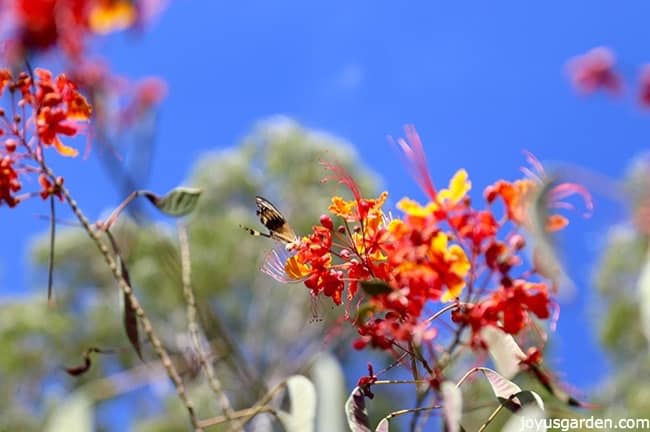
Just because … A butterfly enjoying my Red Bird Of Paradise.
If you like trailing succulents then check out Fishhooks Senecio, it’s very easy to grow!
YOU MAY ALSO ENJOY:
How Much Sun Do Succulents Need?
How Often Should You Water Succulents?
Succulent and Cactus Soil Mix for Pots
How to Transplant Succulents into Pots
Aloe Vera 101: A Round Up of Aloe Vera Plant Care Guides
This post may contain affiliate links, you can read our policies here.
- About the Author
- Latest Posts
Nell, the founder of Joy Us garden, was born into a gardening family and grew up in Connecticut’s countryside. After living in Boston, New York, San Francisco, & Santa Barbara, she now calls the Arizona desert home. She studied horticulture & garden design, working in the field all her life. Nell is a gardener, designer, blogger, Youtube creator, & author. She’s been gardening for a very long time & wants to share what she’s learned with you.

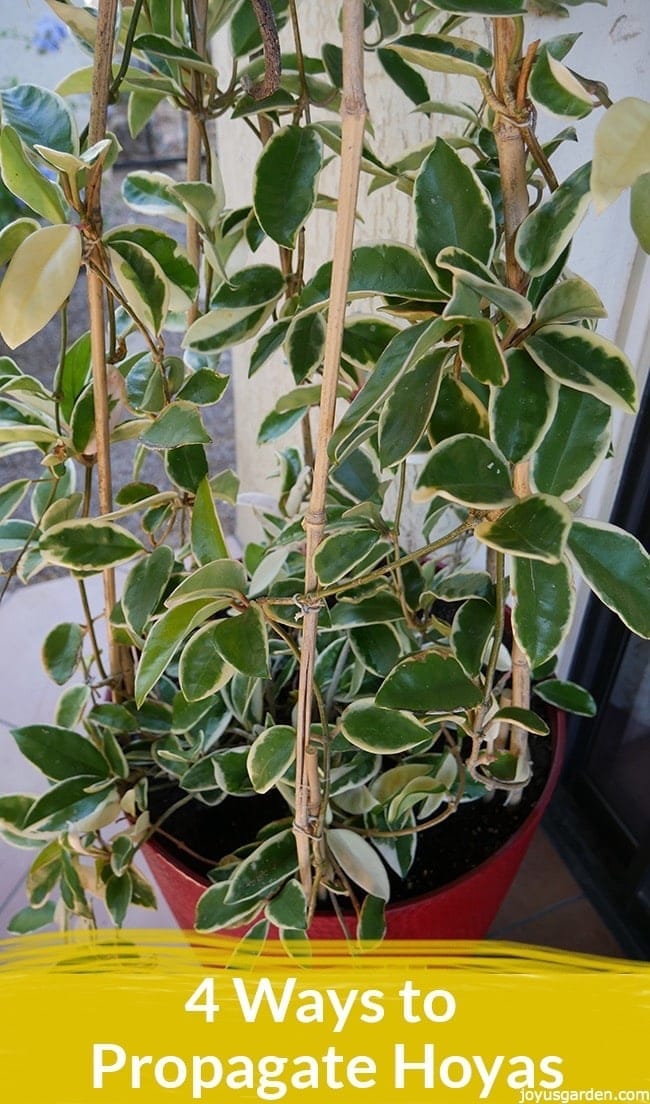
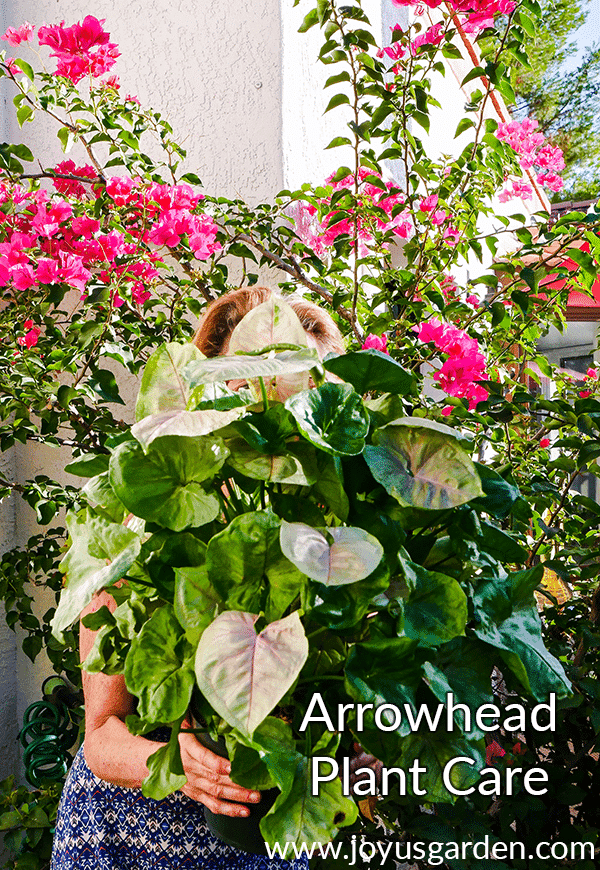
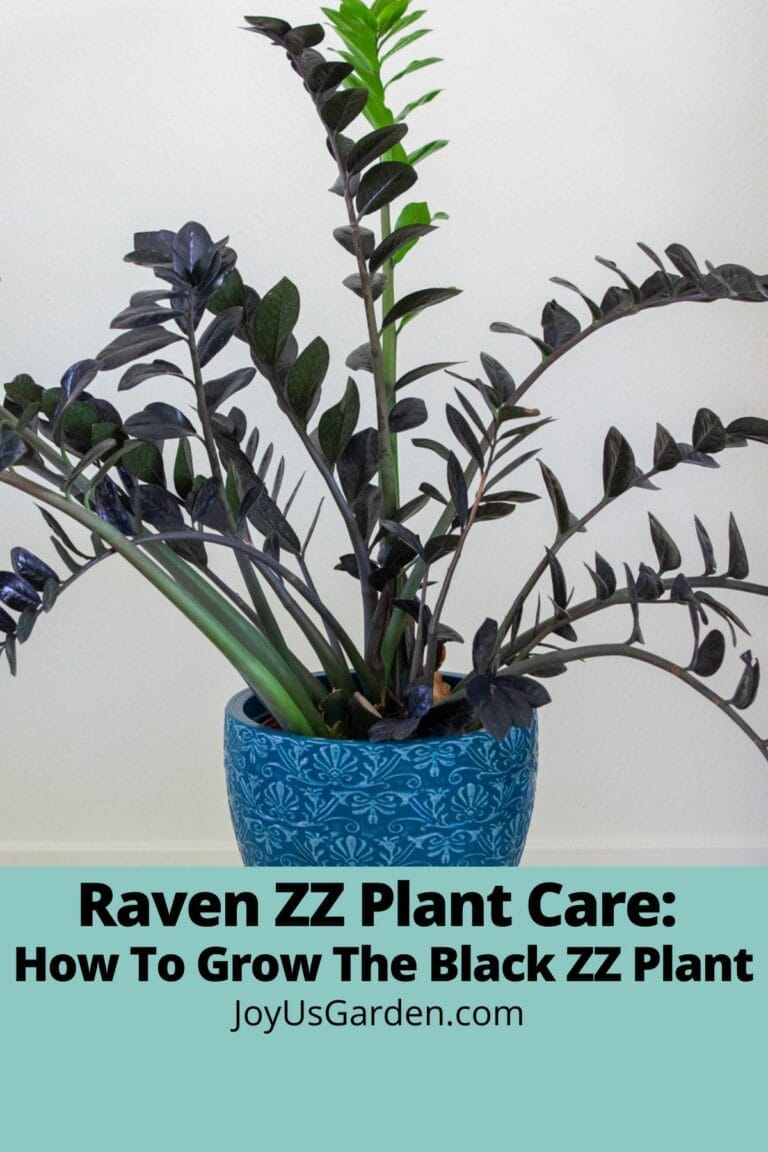


Hi Tamara – SOP cuttings can do that sometimes. 9 will do fine & 1 won’t. By curling I’ll assume you mean shriveling. The mix is most likely too wet, especially if they’re green. I spray my SOP cuttings to prevent that. Shriveling can also be too dry – depends on how the pearls look. Nell
Help! I received a string of hearts as a Christmas present, and vines are dying off one by one. First the leaves wilt and then the whole vine dries off and dies. The plant is half the size it was a month ago. I only have one window in my apt., and it is hanging right in front of it. The light is weak but it is a West-facing window. To make up for the weak light I have a grow light on the plant. I only water it for two seconds once a week since it is winter and I live in a climate where it gets cold in the winter (east TN). The potting soil is a cactus mix with sand, and drains well. What can I do to keep the plant from dying? It has new growth, especially on the ends, but even the new growth is dying when the vine it’s on dies.
Hi Amelia – SOH likes bright natural light. Mine grows outdoors out of direct sun. Sounds like not enough light & too much water. It could have been wet from the get go & never dried out. Mine has grown so much & gotten very bare at the top so I’m cutting it all back. Stay tuned for that post. they do root readily in water. Nell
Hi Nell,
I live in SE Australia at about 2,000 feet and have 2 SOHs which are only 2-3 years old from purchase and have vines that are 5′ & 3′ respectively. They live outside from October through May (our seasons are reversed to yours) in a shaded courtyard and then come inside when the dewpoint starts to fall close to 4C (we live in a frost hollow, so our dewpoint will be closer to 0C). They both flower profusely and seem quite healthy.
My question for you is this sequence: what are the spear looking pods that they produce in the autumn? Are they actually seed pods and if so, can the seeds be harvested and if so how? Or, is propagation only possible via starts from the nodules?
Thanks,
Sully
Hi Sully – Yes, those are the seeds pods which are vaguely reminiscent of milkweed seed pods. I’ve never grown a String Of Hearts by seed (only by tubers & cuttings) so I can’t help you with that. Nell
Hi Nell 🙂
I have a small string of Heart plant, plus 1 cutting that’s now rooted.
My question is …
Can I spray water on the Heart leaves, just a mist when I’m watering ?
I Live in Pennsylvania …
Thanks Nell ??
Yes Tammy, you can misting the trails. Before careful about misting the soil too much because the plant could rot out. Nell
Hi Nell…..I just got my first string of hearts….it was neglected so I have cleaned it up and gave it a bit of a haircut. Those ends are now in pots with the hope of rooting them. What is with the large nodules in the pot? Am not sure if these are detrimental or part of their growing cycle. Advice?
Thanks Freda
Hi Nell…figured it out ! String of Hearts now growing well……………Freda
Hello from lil ol’ NZ. I to have a string of hearts about 3′ long but it is not very lush. It’s also a long distance between leaves about 3″. Any idea why this is? Or is there different variants of this plant? Thanks